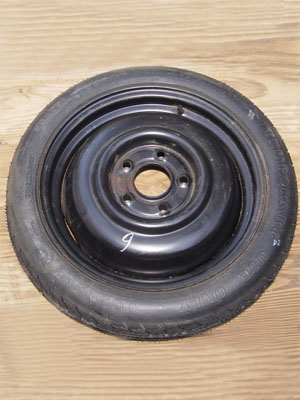Deconstruction makes us sociopaths
 There are no facts, only interpretations; a wise man once said this.
There are no facts, only interpretations; a wise man once said this.
What is an interpretation?
It can be many things, but the most basic type of interpretation is how much information you include in your decision-making.
If you “boil down” a situation to one or two factors, it gets easier to make a choice, but you run a greater risk of unintended outcomes or band long-term aggregate results.
One great example comes to us from the auto industry, which sometime in the 1970s began manufacturing specialized “donut” spare tires.
Instead of including a full-size wheel and tired as an extra, the car companies “saved” money and reduced costs by specially manufacturing smaller, flimsier spares.
On the surface, and if we’re only looking at a single factor, this is a great decision. $10 saved per million cars sold adds up to quite a bit of money. Over time, it’s a massive fortune.
There’s also science behind it. Most people never get flats. If they do, they’re usually close to home and the places they normally go for tire repair. Also, people like paying less for cars.
In every detail, it’s correct to use a donut spare. Most people do not notice. It saves money and space. Your average person doesn’t care whether they have a full spare or not.
That’s one perspective, or interpretation. Another says we should look at not as few factors as possible, but as many. We want to look at them all simultaneously.
Possibly we could describe this point of view as the “whole experience” outlook. What is the whole experience of the end user? What is the whole experience of society by having this product in its midst?
Although most people do not get flats, when someone does, it’s a bit of an unreal shock because they’ve pushed the possibility out of their head.
If their experience begins with a donut spare, they will remember it badly. These tires are so flimsy and miserable that they require you to stop what you’re doing and go immediately to a tire repair.
From the whole perspective, the experience of the individual with a donut spare is alienating and negative, in part because at that moment the decision to save $10 on a fake spare will seem absurd. The experience of civilization at large is that discontent, rage and ill will spread and people distrust industry even more.
The whole approach takes into account many more factors over a greater span of time. The surface assessment, that uses as few factors as possible, predicts immediate results only in the context of the factors it concerns itself with.
In this sense, it is the result of deconstruction. As good post-modernists, we “deconstruct” objects, ideas and people by removing them from their context and breaking apart their factors, then looking at those one at a time.
As the whole view shows us however deconstruction separates us from reality as it is, which is a broader and deeper experience. The numbers make sense on our spreadsheets, and science tells us to go ahead, and yet something is missing.
That something is not a part of the whole, or a forgotten factor, but the whole itself: the connection between all the parts that reveals the hidden form behind the manifestation we know as physical form.
Our society misses out every day as its deconstructed ideas make people more alienated, distrustful and resentful. In addition, we miss out on a greater experience of life we might enjoy.









